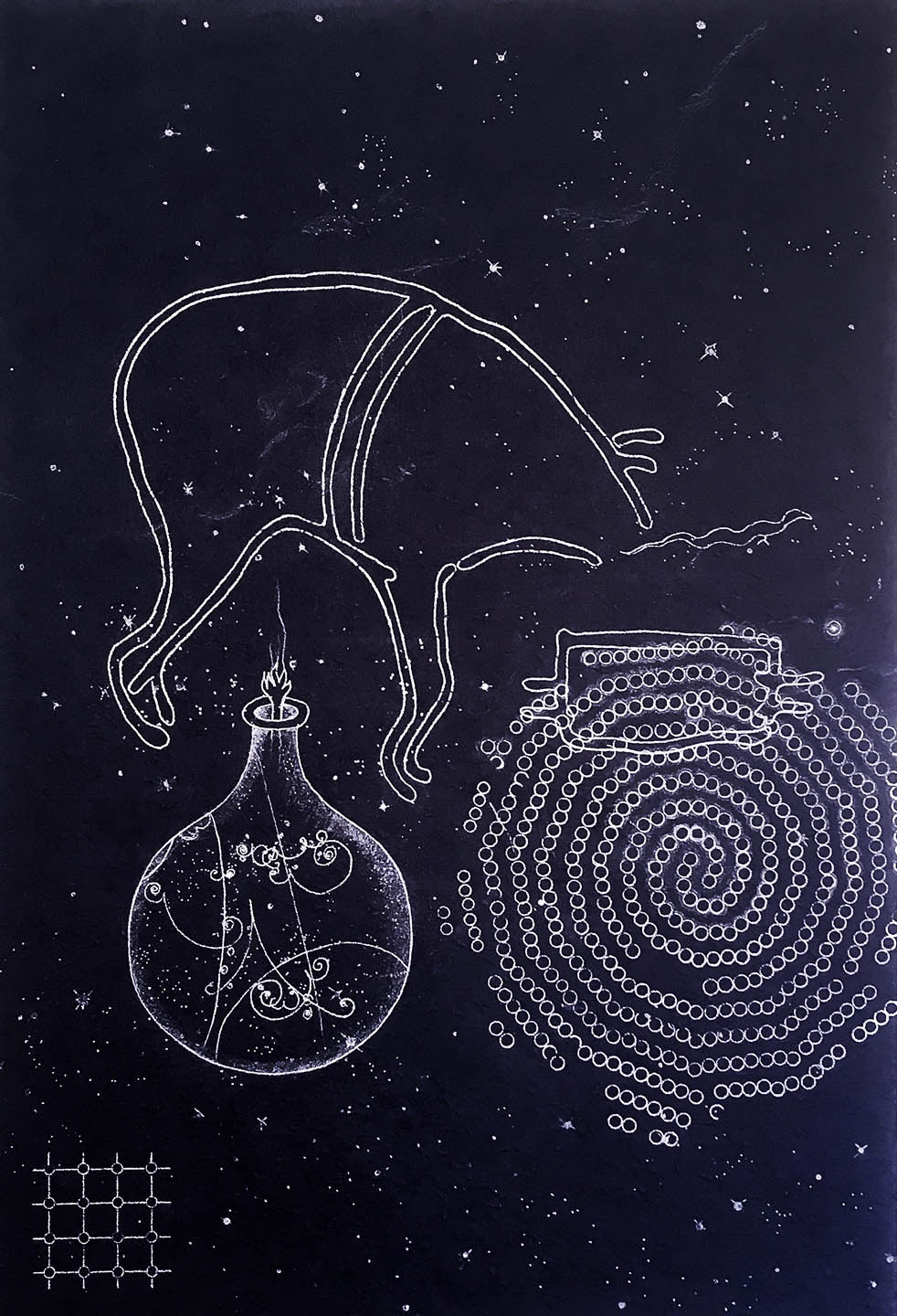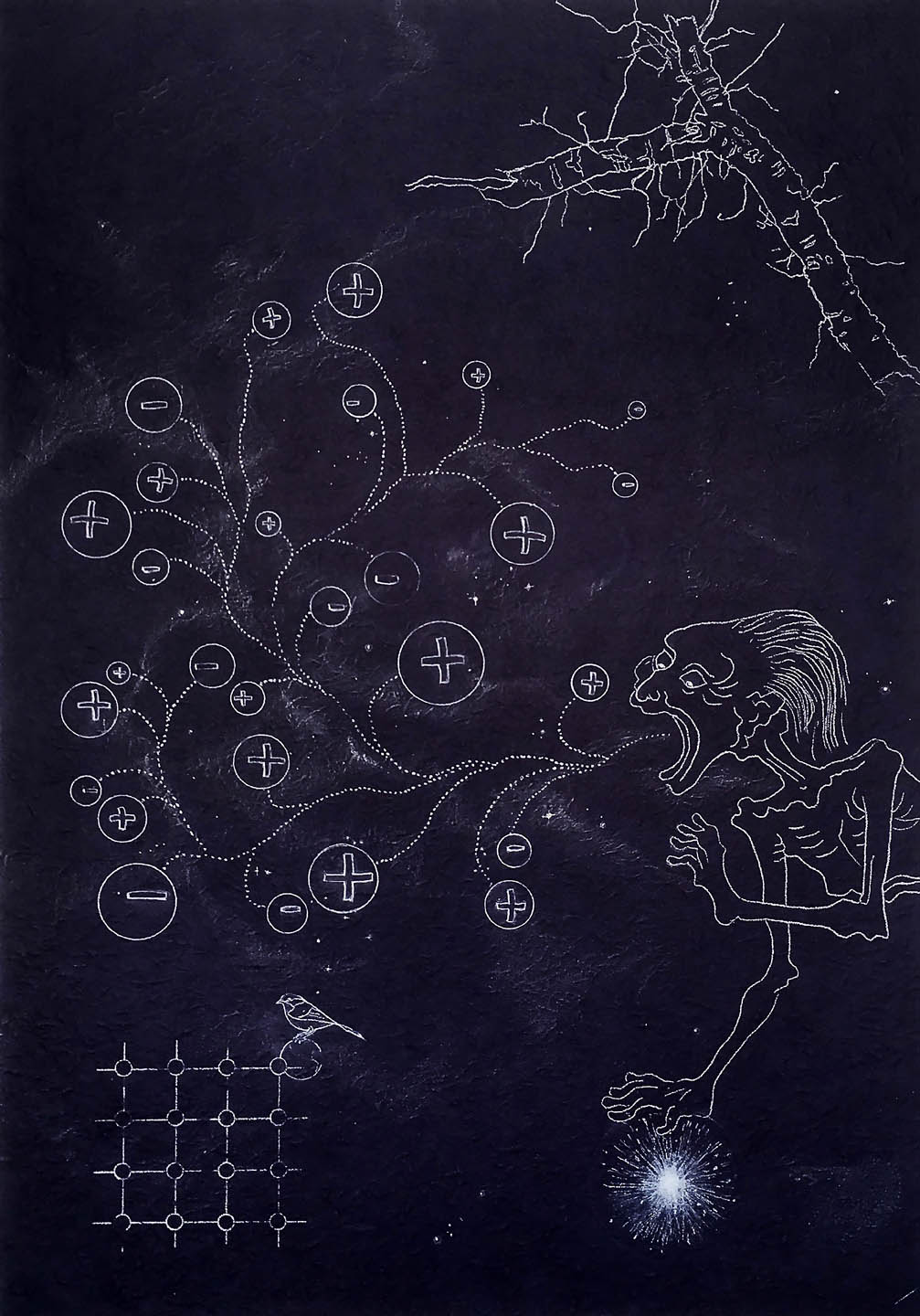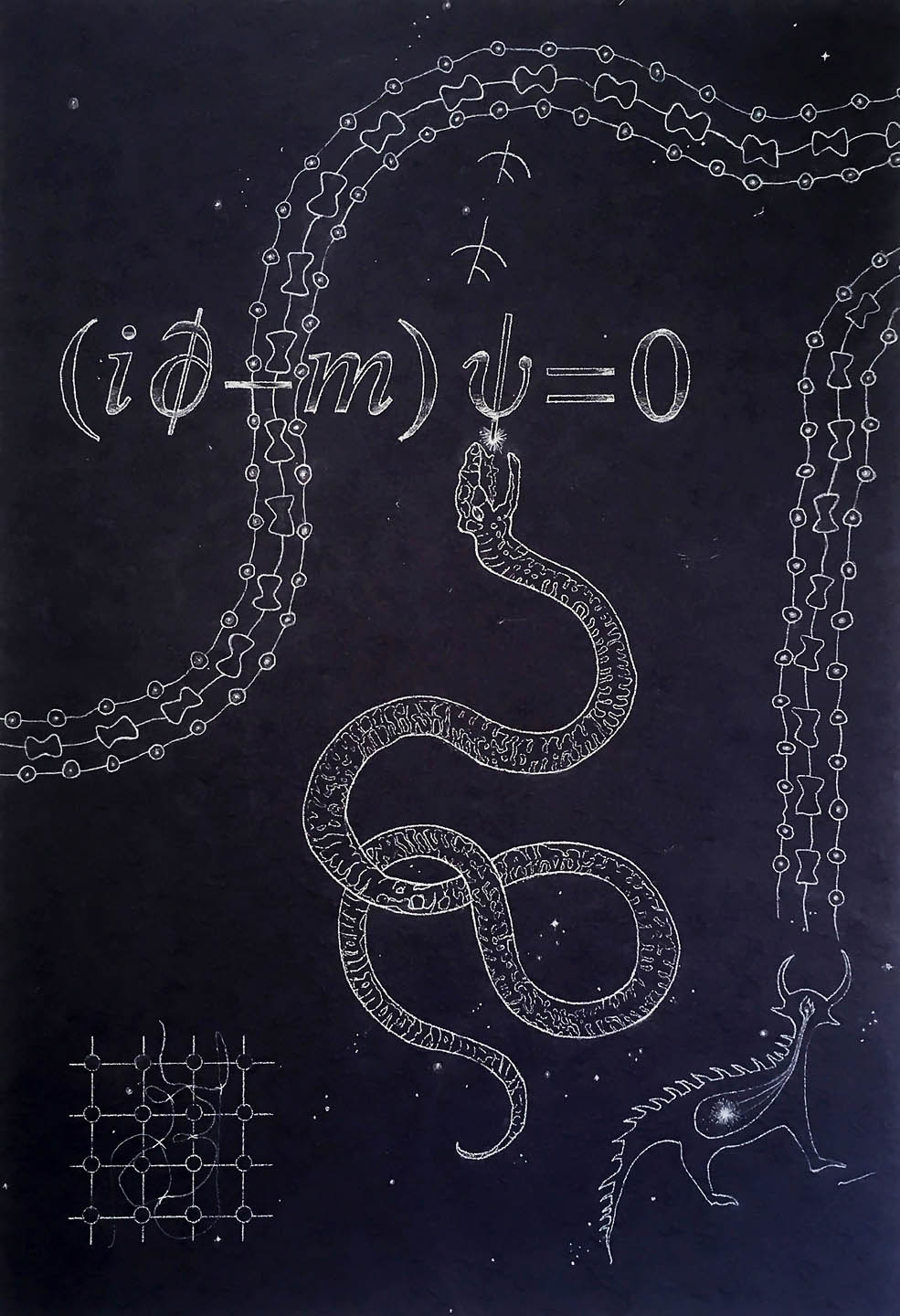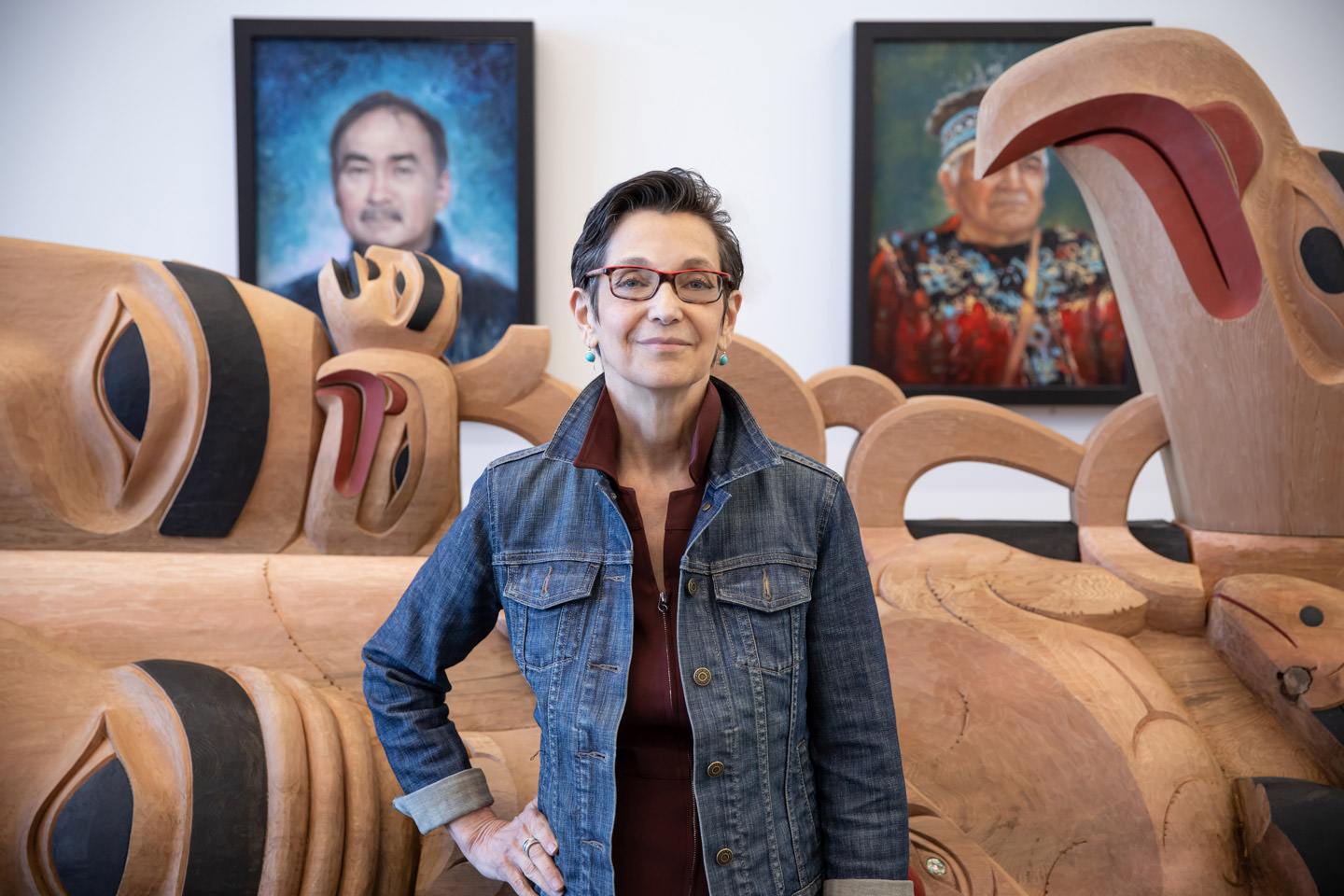In 2019, an online exchange between Neil deGrasse Tyson and Norm Macdonald generated a lot of heat. In a spontaneous effort to presumably bring everyone down, the host of Cosmos: A Spacetime Odyssey took to Twitter to announce: “The Universe is blind to our sorrows and indifferent to our pains. Have a nice day!” Out of the blue came Macdonald’s retort. “Since you and I are part of the Universe,” he wrote, “then we would also be indifferent and uncaring. Perhaps you forgot, Neil, that we are not superior to the Universe but merely a fraction of it. Nice day, indeed.” Even on a platform as frivolous and caustic as Twitter, here was the eternal clash of the material and the metaphysical, forever in dispute over the nature of reality.
At roughly the same time that the TV scientist was being heckled by the standup comic, physicists from the TRIUMF particle accelerator at UBC were collaborating with students and staff from Emily Carr University of Art + Design on a visionary four-year project to reconcile these world views. This was an effort to grapple with the ineffable, the space where calculations and theory meet cosmic artistic mysteries within the divine realm of human imagination. The goal, in the words of Emily Carr associate professor Mimi Gellman, was to generate “ways of thinking that can transcend our current notions of the spiritual and physical paradigms of the world.” Ambitious feels too meagre a word.

Invisible Landscape #5 by Mimi Gellman, conte on Japanese Obonai paper, 25” x 19”, Leaning Out of Windows exhibition.
The results, published in the book Leaning Out of Windows—also the name of the research project—should delight anyone who enjoys pondering the interference pattern between art and science, or wants a more impressive-looking library. Emily Carr professors Ingrid Koenig and Randy Lee Cutler led the bold program, seeking, as they write in the book’s introduction, to “transform the grammar of abstract knowledge by specifically addressing the imperceptible and barely discernible phenomena studied by physics through aesthetics, analogy, and other cultural forms.” In a later chapter, the team turns to pioneering quantum theorist Niels Bohr for a more economical expression of their objectives. “He said the only way to consider the behaviour of electrons in a non-mathematical way is through metaphor—through language like poetry, and as an extension, through art.”
“What I discovered to my tremendous delight was that these scientists who we collaborated with, their interests also lie in the poetic, in aesthetics, and in beauty.”
To a layman (that’s me), the point of the exercise is elusive but thrilling. Advanced physics can beggar comprehension, seeming to debunk reality itself in the search for forces and particles of diminishing size and increasing absurdity. The average artist may be more familiar with burnt umber than dark matter but nonetheless shares with the physicist an occupational encounter with the indefinable. One channels it while the other crashes into it. Both, Gellman says, “are trying to fathom this unknown.” Gellman’s own effort is captured in six haunting drawings titled Invisible Landscapes. She recalls, “What I discovered to my tremendous delight was that these scientists who we collaborated with, who were working at the TRIUMF accelerator lab at UBC, who are doing the most esoteric and profound and mindbogglingly focused experiments on anti-matter—their interests also lie in the poetic, in aesthetics, and in beauty.”

Invisible Landscape #6 by Mimi Gellman, conte on Japanese Obonai paper, 25” x 19”, Leaning Out of Windows exhibition.
The project was divided into four phases, taking place between 2016 and 2022 (with a break for the pandemic), ultimately bringing together almost 80 artists, about half as many physicists, and more than a dozen scholars. Gellman’s conte drawings were produced early in the program, when she worked on the problem of antimatter with TRIUMF physicist Brian Kootte, along with sound artist Giorgio Magnanensi and UBC’s Marina Roy. Koenig and Cutler’s book is filled with images of the work along with essays that add some fine detail to the conceptual picture, including Cutler’s own “Ode to Beauty” and a lovely piece by educator Sadira Rodrigues called “A Boring Berm of Dirt” that contemplates an anomalous feature of the TRIUMF facility. Equally engaging are Jess Brewer’s written contributions, wherein UBC’s professor emeritus in the department of physics and astronomy uses his civilian voice to take a gentle swipe at his own rarefied field of study. On the subject of emergence, a key concept in modern physics and a focus of the research project’s third phase, he beefs, “As far as I can tell, most of the literature on this subject consists of bickering about the terminology.”
Gellman, meanwhile, distinguishes herself not only with Invisible Landscapes but also the essay “Crossing No Divide: Mapping Affinities in Art and Science,” illuminating an unexpected rapport between quantum physics and North American Indigenous knowledge, language in particular. “English is inadequate,” she says. “European languages are inadequate in describing, framing, situating a living universe. The way they are structured, obviously, emerges from a world view, and if that world view did not fundamentally understand the relationality inherent in all things, then the language evolved as a language of classification and separation. Right from the beginning, it separates fish from water from me, right?” One way to burst that limitation, as Gellman observes of the Ojibwe language Anishinaabemowin, is to privilege verbs over the noun-based constructions of western languages. Now we’re in a universe not of things but of energy, flux, and movement, of “spirit reduced to the point of visibility,” in Einstein’s famous formulation, wherein, he concludes, “there is no matter.” Gellman, who is Anishinaabe/Métis, says, “If we look at it through an Indigenous lens, language is a kind of graph and energetic manifestation that has the capacity to be a form of translation of the spirit of the universe.”

Invisible Landscape #2 by Mimi Gellman, conte on Japanese Obonai paper, 25” x 19”, Leaning Out of Windows exhibition.
As it happens, Gellman, while finishing her PhD, worked with David Peat, one of the leading voices in early quantum physics. “I actually went and studied with him in Pari, Italy. He and [quantum physicist] David Bohm were best friends with Krishnamurti and Einstein. I think what made them so great, and what makes quantum physics so interesting, is that it has the potential to offer us that other world beyond the mathematical, beyond this idea of a fixed universe. I think it opened a portal to thinking that was emergent, generative, and magical. That’s a crux. They were open. Their minds were not siloed in a disciplinary way. What I think David Bohm came to understand is that Indigenous societies understood the quantum world before western physicists devised it.”
In the end, if Leaning Out of Windows sought to “transform the grammar of abstract knowledge,” it found a coherent and suggestive model in Gellman’s contributions. For Gellman herself, this weird and heady odyssey that took place in our own backyard became a career highlight: “This has been the most extraordinary and generative research praxis project that I’ve ever participated in.”
Read more from our Summer 2023 issue.









